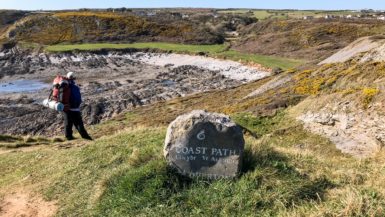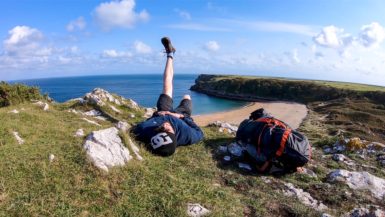Tips & Information on Wild Camping in the UK
7 Minute Read
Wild camping in the UK can be an immensely enjoyable and rewarding experience. It can be extremely liberating sleeping outside, under the stars, and surrounded by nature.
But, there are plenty of people who either don’t know how to wild camp or they disobey certain rules and spoil the natural landscape for the rest of us.
As a wild camper, long distance hiker, and wildlife lover myself, I thought I should provide my tips for how to go wild camping in the UK and provide you with the information you need to get started.
These tips will be useful if you’re hiking a long distance trail, going on a multi-day hike in a National Park, or simply want to do a single night microadventure in your local nature spot.
Disclaimer: these are just my thoughts on wild camping as a personal outdoors enthusiast. You should not consider any of this information as legal advice. If you wish to know more, contact a legal advisor or research the rules and laws in greater detail yourself.
This article on wild camping in the UK includes:
- What is Wild Camping?
- Where Can I Go Wild Camping in the UK?
- What Does This Mean?
- How to go Wild Camping in the UK
- Tips for Wild Camping in the UK
- What to Pack When Wild Camping in the UK?
- What to Eat?
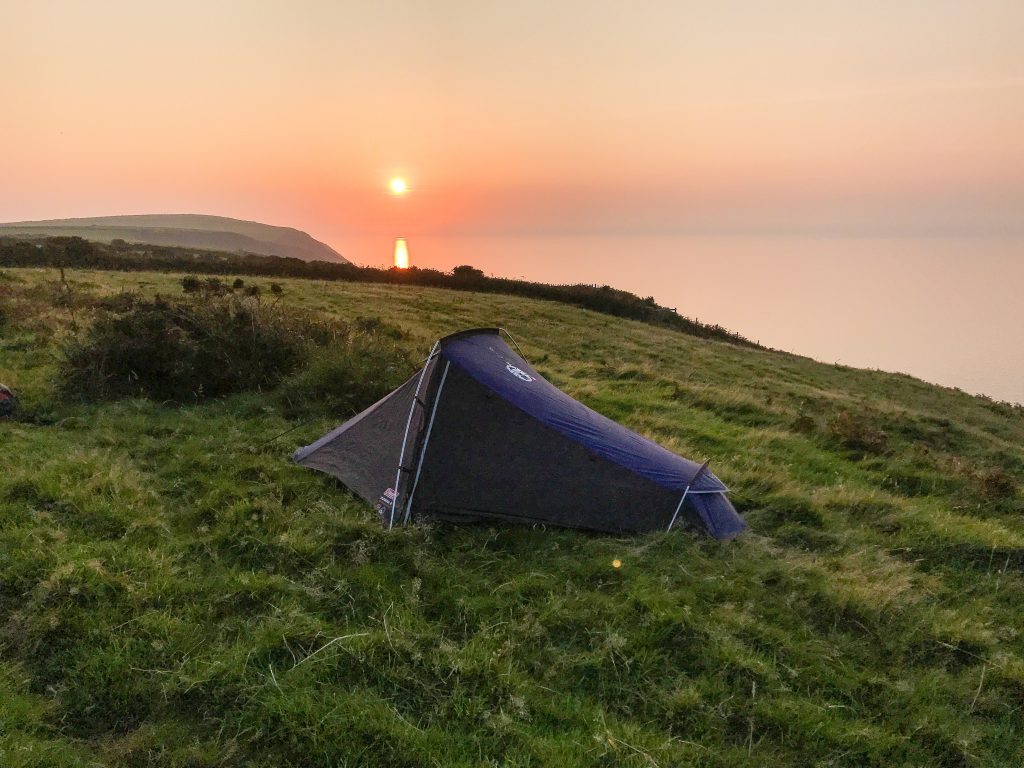

This page contains affiliate links. This means I make a commission if you buy a product I have recommended (at no extra cost to you). All recommendations I give are genuine and my own. Thanks for the support!
See also:
Wild Camping Kit List
10 Beginner’s Hiking Tips
How to Train for a Long Distance Hike
1. What is Wild Camping?
It is a form of outdoor camping not in a designated campsite or caravan park. It often involves wilderness backpacking and an element of bushcraft camping skills.
Wild camping involves pitching a tent somewhere in nature where you must rely on yourself and your supplies for the duration of your trip.
In the UK, this often involves camping in National Parks and other areas of the natural landscape where urban settlements and crowds of people are mostly absent.
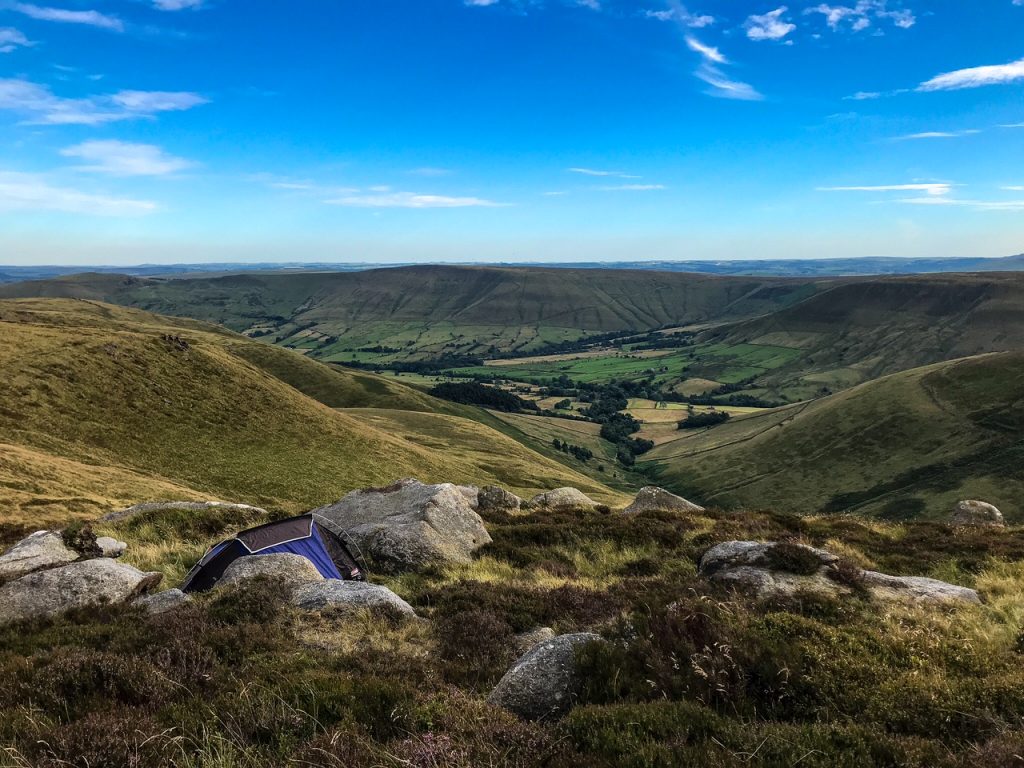

2. Where Can I Go Wild Camping in the UK?
This is perhaps the most important thing to be aware of. Where you are legally entitled to camp in the UK varies from place to place.
In Scotland, thanks to the Land Reform Act of 2003, wild campers are protected by a freedom to roam. This means you can wild camp at many of the amazing nature spots and National Parks in Scotland such at the Cairngorms and Loch Lomond.
Sadly, this law doesn’t apply to England and Wales. You are allowed to wild camp in most areas of Dartmoor National park, but for everywhere else, you are not legally entitled to wild camp.
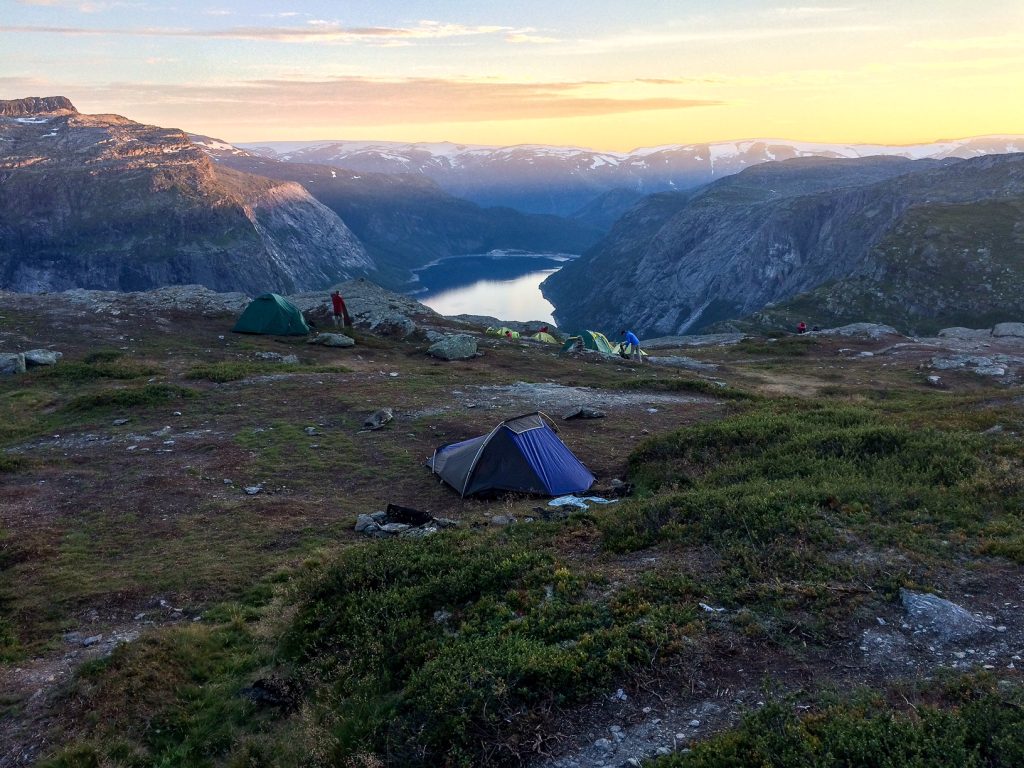

3. What Does This Mean?
This means if you pitch your tent in a National Park without permission, you could get in trouble. Having said that, I’ve never actually met anyone who has been “caught” or told off by the police.
I believe, the worst you could expect to happen is being asked to move or potentially getting a fine.
The reason this is the case is due to old land ruling laws. Many areas in the UK are owned by a farmer or another kind of unseen landowner – even in most of the National Parks.
This unfortunately means you can walk through the area using the trails and public rights of way, but you can’t wild camp. It would mean trespassing.
Most of these rules are upheld to stop squatters, vagrants, and illegal raves from occurring. Basically, people who intend to settle and stay for a while, and those who in general are mistreating the land.
Sadly, people who just want to wild camp for the night also fall in the same category despite having vastly different intentions.
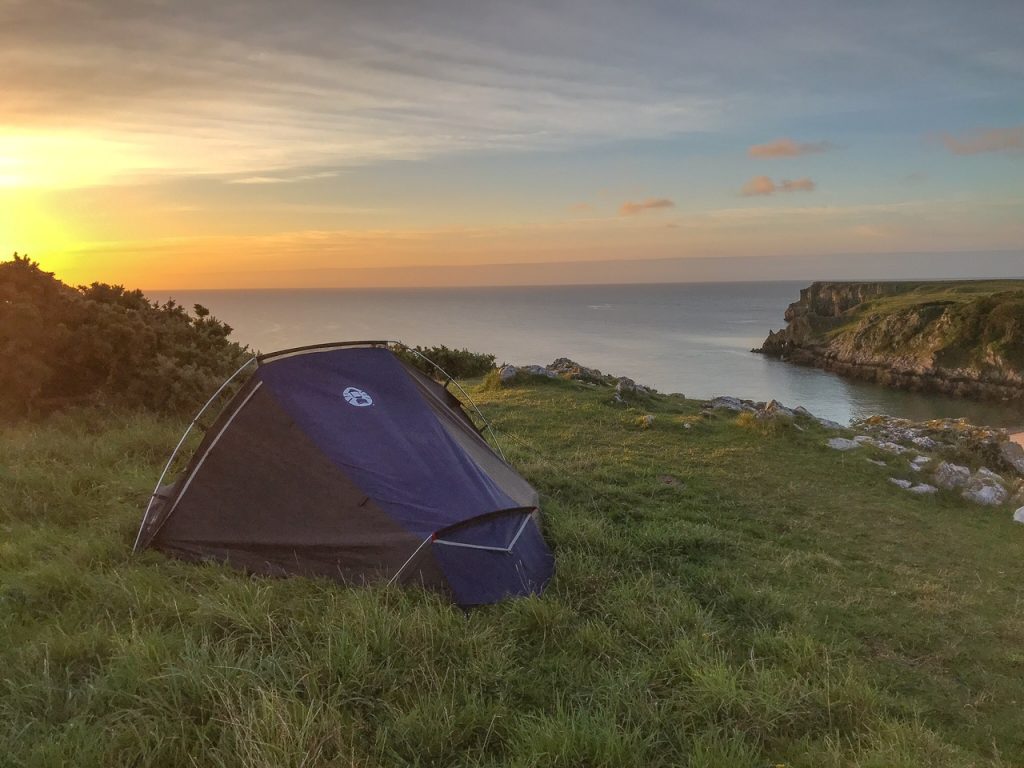

4. How to go Wild Camping in the UK
A nifty way around this is to simply ask for the landowner’s permission. A simple email or phone call to the person who owns the land, often a farmer, will let you know if you can camp there. After that’s been settled you can put your mind to rest or look elsewhere if they say no.
If I’m being completely transparent, I’ve never done this. When you go somewhere like the Peak District or Lake District and you’re camping up near the mountain summits it hardly feels necessary. Still, I think you should know the procedures in case you want to take this precaution yourself.
Alternatively, there is a company called Nearly Wild Camping that you could use. They have gathered together +125 remote, secluded, and quiet locations all over the UK where landowners have given permission for campers to use.
Membership costs £25 per year. Visit their website here for more information on how to sign up and to get out camping as soon as possible.
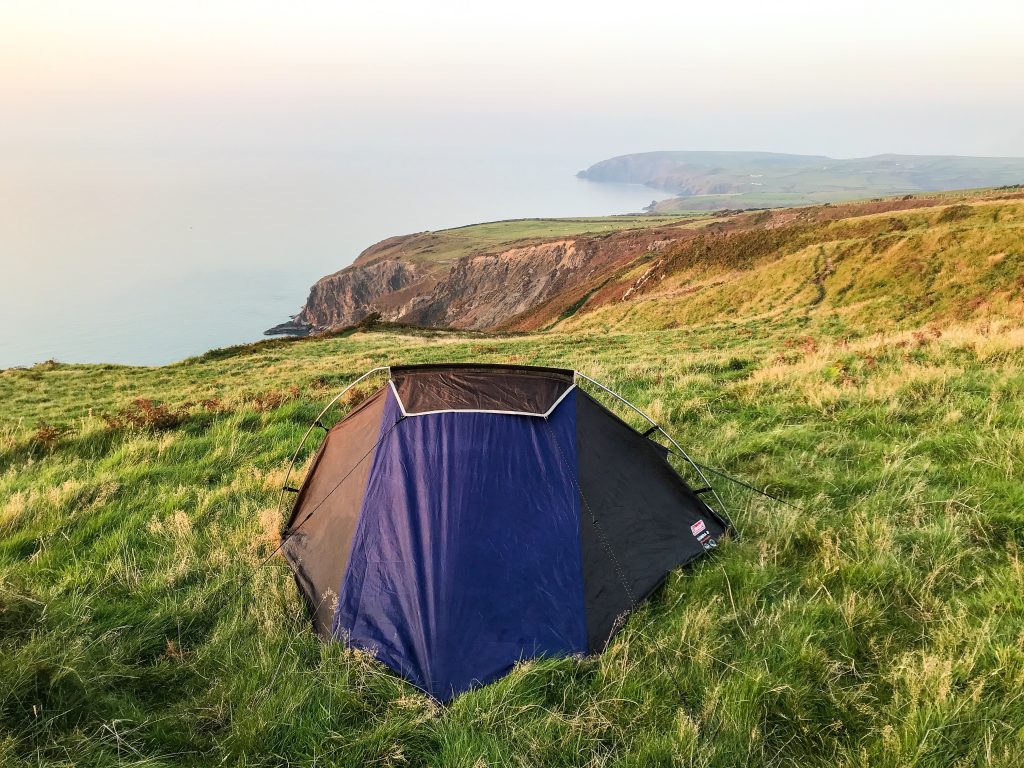

5. Tips for Wild Camping in the UK
Knowing this information, if you are still planning on heading out to some of the National Parks in England and Wales, there are some things you should know about how to make the most of your trip there.
Follow some of these tips to ensure you have a trip that runs as smoothly as possible!
Leave No Trace
This is perhaps the most important wild camping tip of all and goes a long way towards making it a venture that can be enjoyed without disrupting anyone else.
Take all your litter away and make sure the site is clear after you’ve left.
Don’t light fires. It makes your pitch stand out and is anything but discrete. It also chars the landscape and is a visual eyesore. If you want to light fires, pitch in a designated campsite that allows them.
Don’t dig up the land for drainage ditches, or cut down trees for firewood, or alter the landscape anymore than is absolutely necessary.
I feel like this is an obvious point but I’ll make it anyway. Don’t play loud music or make too much noise. The point of wild camping is to be discrete and this clearly is not.
Manage your waste. If you need to go to the toilet, dig a hole away from walking paths and water sources. Bury any of your toilet waste fairly deep underground and cover it back up again.
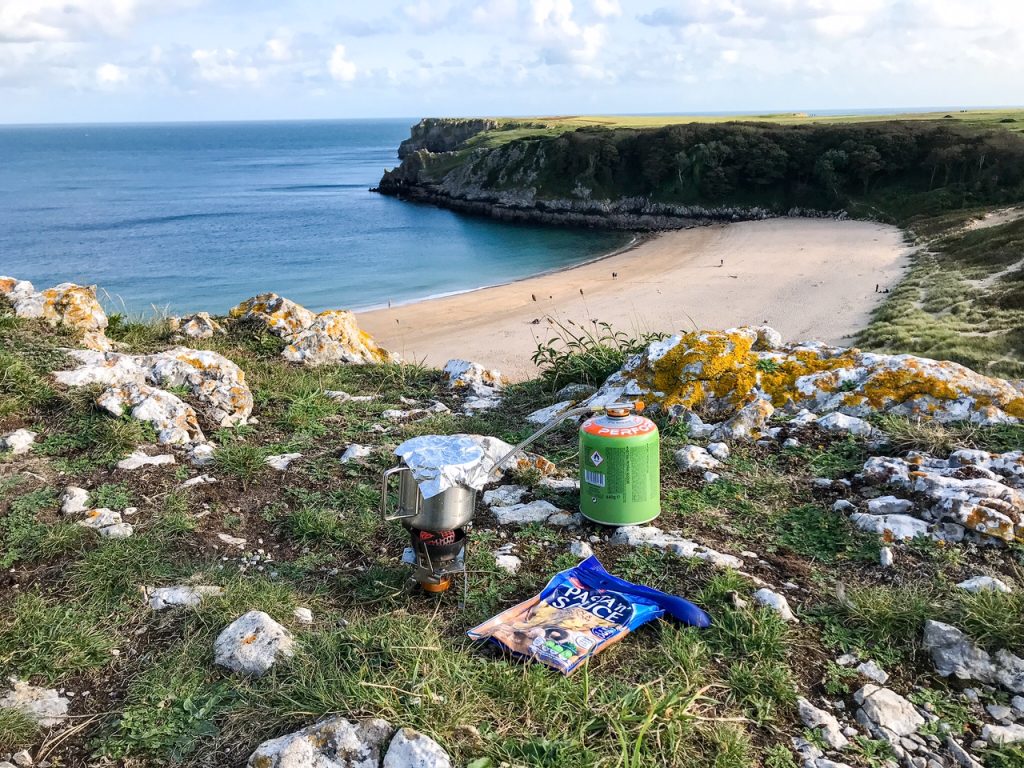

Arrive Late, Leave Early
This is a tip I’ve always practiced and it’s one of the reasons I’ve had so much success with wild camping in the UK. It allows me to be out of the way and avoids people seeing me pitch my tent.
It means I keep to myself and stay discrete as I pitch my tent around sunset then pack up camp shortly after sunrise. I try not to lounge about and sleep in late. Again, if you want to do that maybe you should stay in a campsite instead!
It does mean sometimes I have to sit around for an hour or two waiting for it to get dark before I pitch my tent. But if that’s the cost for being able to wild camp in a beautiful and secluded spot then so be it!


Choose Your Pitch Carefully
There is a lot that goes into this and most of this knowledge comes from experience. However, there are some basic concepts you can take into consideration.
Camp far away from urban settlements. This should be fairly obvious but sometimes that’s easier said than done if you’re in a smaller AONB with villages and towns nearby.
Camp on flat ground. Bumpy, rough ground is still far easier to sleep on than a slant or slope – trust me. If you camp on a slope and you are sliding down to the bottom of your tent all night you’ll have a dreadful sleep; I know from personal experience. I good sleeping mat should take the worst roughness out of the ground anyway.
Pitch away from the main trail. If you’re walking one of the long distance National Trails in the UK (as I’ve done with the South Downs Way, Pembrokeshire Coast Path, and Hadrian’s Wall Path) then don’t camp right next to the trail. Find a more remote spot away from the main path and ideally out of sight.
Don’t jump over farmer’s fences. If you start hopping over fences and stone walls you’re increasing the likelihood you’ll get into trouble. Steer away from these spots and look for somewhere off the trail that’s more remote. It might mean you have to walk another mile or two at the end of the day to find a pitch but that’s the way it is!
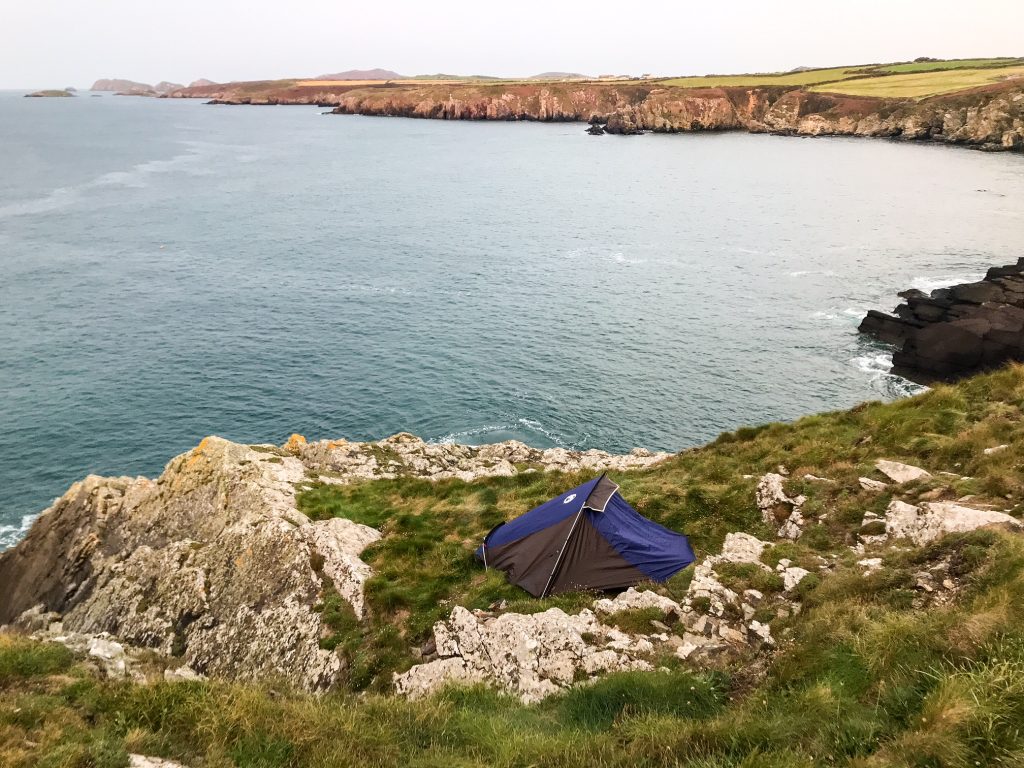

6. What to Pack When Wild Camping in the UK?
Going wild camping in the UK, you’ll need to bring a good amount of equipment with you. First up is a tent. Try to go as small and lightweight as you can without compromising on quality. The more nimble and subtle your tent is, the more comfortable you’ll feel wild camping. I usually opt for the Coleman Cobra 2 as my go-to.
See also:
Coleman Cobra 2 Tent Review
I know some people that choose a bivvy bag, which is the ultimate outdoor camouflage. You are essentially sleeping in the open, covered by a small layer of canvas or tarp. It means you can be very discrete and greatly reduce your pack weight.
Second is a good sleeping mat. These can either be foam or inflatable. The ground is cold and often damp. It will sap the warmth from your body making you very uncomfortable indeed. Not to mention bumpy ground which will be terrible to sleep on. A sleeping mat can make all the difference between a poor and good night’s sleep.
Next is a sleeping bag. A synthetic 3-season sleeping bag should suffice unless you plan on camping in temperatures of 5 degrees or lower. Then you may want to opt for a more expensive 4-season down sleeping bag.
See also:
Wild Camping Kit List
Multi-Day Hike Kit List
The clothing you wear will also be important. It’s much colder in the tent at night and you should dress to reflect this. I always sleep in a pair of thick socks, thermal leggings, a thermal base layer shirt, a warm hat, and sometimes a fleece too.
Miscellaneous items include a head torch and a book or e-reader. A Head torch or any flashlight is essential as you won’t be able to see anything in your tent the second it gets dark. I always bring my Kindle with me because I love to read in my sleeping bag before I turn in every night.
A portable charge is another item that can come in great use. You won’t have access to any other charging points in the wild. A portable charge can make sure your phone and camera are fully charged for the duration of your trip!
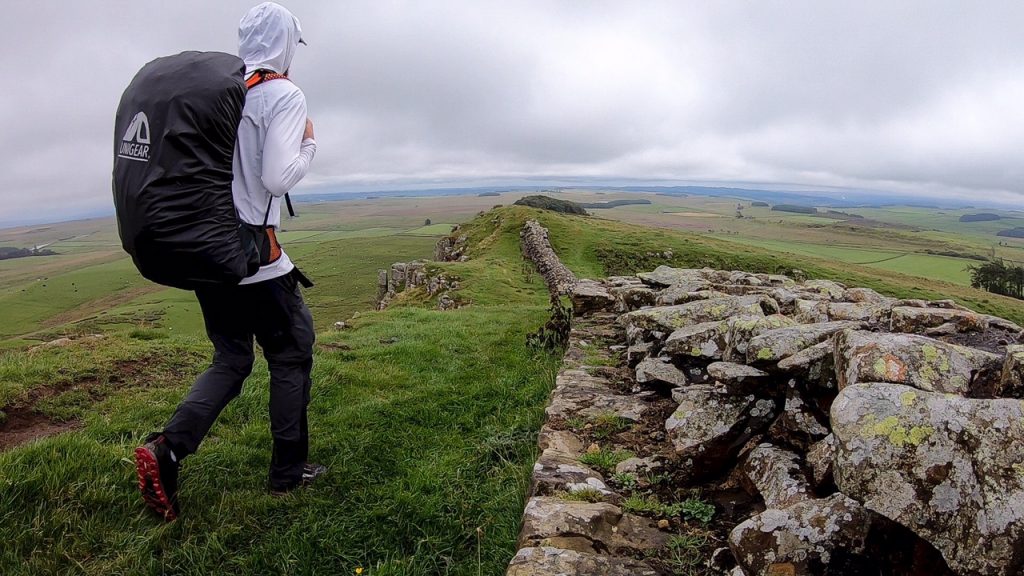

7. What to Eat?
A camping stove is another essential bit of gear. Being able to cook a warm meal and hot drink at the end of a long day of hiking makes all the difference.
You must also bring enough food and water with you to last the duration of your trip. A life straw or water filter can be a great item to bring as it allows you to drink safely from water sources you may come across along the way.
See also:
What to Eat on a Hike
In general, rehydrated meals are perfect for wild camping. You can get specialist meals from hiking stores, but I simply use pouches of dried pasta or rice bought from the supermarket.
Try to buy things in packets rather than tins as it’s lighter to carry. Also pay attention to how much water is needed to cook the food and how long it takes. This can make a big difference to what you bring.
Other snacks that are good to eat include: jerky, dried fruit, nuts, trail bars, nut butters, instant oats. I always carry some hot chocolate powder, instant coffee, and tea bags to complete my food bundle!
Before You Go
Thanks for reading my blog on wild camping in the UK. If articles like this interest you, head over to my blog page to find out more!
If you’re new to Walk Wild, check out the About Me page to learn who I am and what made me want to be a travel writer.
Please comment below, let me know what you think and if there’s anything else you want information on!
Follow me on Twitter, Instagram, and YouTube to see out more.





